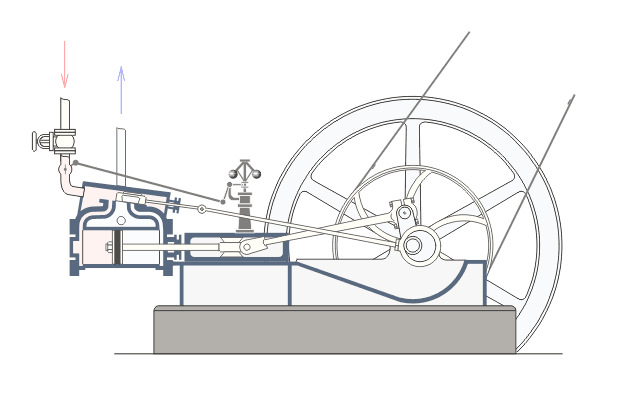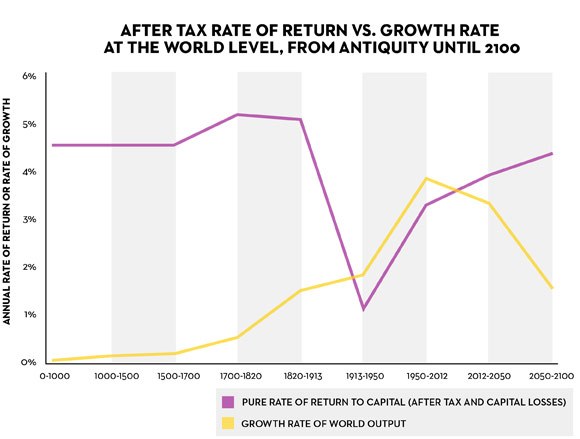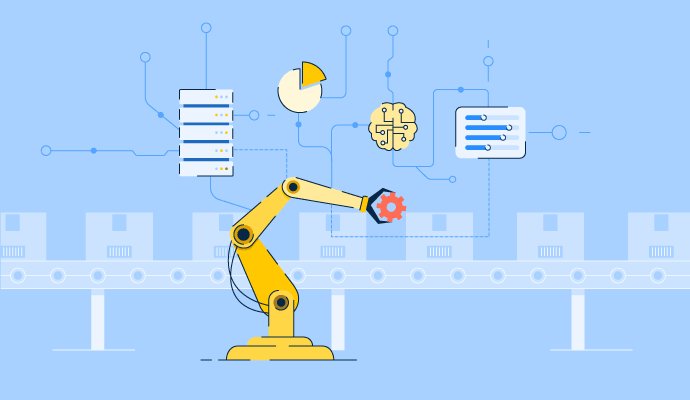If you work in manufacturing or supply chain, you’ve probably heard of Industry 4.0. While the term may be used together with buzzwords like digital transformation, interconnectivity, or end-to-end value chain, Industry 4.0 refers to a new industrial revolution.
Industry 4.0 is driven by four disruptions:
- Rise in data volumes, computational power, and connectivity, especially new low-power wide-area networks
- Emergence of analytics and business-intelligence capabilities
- New forms of human-machine interaction such as touch interfaces and augmented-reality systems
- Improvements in transferring digital instructions to the physical world, such as advanced robotics and 3D printing
Definition of Industry 4.0 paraphrased from McKinsey & Company
It sounds very complex, and it actually is. Which means that it can also be confusing. To make sense of it, companies need to:
- Understand what it is (and what it isn’t)
- Realize how it can impact them and their market
- Plan to adapt to short term and long term changes
- Develop strategies for continuous improvement
Let’s start with the basics and take a closer look at at Industry 4.0, its history and how it may impact your business. Industry 4.0 has a few unique characteristics, including global economic context and the advent of fully automated business operations. Nevertheless, Industry 4.0 is similar to previous industrial revolutions. It helps to understand what an industrial revolution is and how it impacts the economy and our society before we dive into the specifics of Industry 4.0.
What you need to know about industrial revolutions
The First Industrial Revolution began due to the invention of steam power, which was then used to create steam engines. Manual labor industries, such as agriculture and mining, used engines to increase productivity and expand their output, generating GDP growth. As a result of economic growth, many people moved to cities for factory work, contributing to a population boom and urbanization. While many benefited from industrialization with better jobs, others had a hard time adapting. The new machines weren’t always safe, and accidents were common.
 The Second Industrial Revolution happened throughout the late 19th and early 20th centuries. It is characterized by mass production, the extensive use of petroleum and electricity, and the development of transportation networks such as railroads. Also, the telegraph revolutionized the way people and companies communicated. All these advancements had limited usability because they still required human intervention. The computer made automation possible, which precipitated the Third Industrial Revolution in the 1960s. The invention of the transistor and the microprocessor led to the rise of electronics. Since electronic devices required more energy, nuclear power was developed to produce large amounts of electricity.
The Second Industrial Revolution happened throughout the late 19th and early 20th centuries. It is characterized by mass production, the extensive use of petroleum and electricity, and the development of transportation networks such as railroads. Also, the telegraph revolutionized the way people and companies communicated. All these advancements had limited usability because they still required human intervention. The computer made automation possible, which precipitated the Third Industrial Revolution in the 1960s. The invention of the transistor and the microprocessor led to the rise of electronics. Since electronic devices required more energy, nuclear power was developed to produce large amounts of electricity.
While industrial revolutions happened in very different historical contexts, there are a few things they all have in common.
Common characteristics of industrial revolutions
The first common aspect that all industrial revolutions share is automation. Various technological advancements allowed companies to increase output and expand to new markets. Automation always replaced and created jobs simultaneously. We don’t know whether new jobs always outnumbered jobs lost; however, we know this shift in the workforce impacted employees in different ways. If you’ve read The Grapes of Wrath (or watched the movie), you may remember that it was about a family of farmers forced out of their home, replaced by tractors. Millions of people like them moved to the western United States to find jobs, creating inflated demand for work, allowing employers to easily replace people.
Another common characteristic is that they are all driven by capital. While some inventions are accidental, most new technology is developed and improved by companies that have substantial research and development budgets. Some inventions are initially developed by governments, such as the internet; however, they only become mainstream when used for business. Any technological advancement is beneficial for companies that have the budget to invest in its deployment and optimization.
While industrial revolutions improve people’s lives in many ways, they don’t reduce inequality. According to Nobel Prize winner Thomas Piketty, revenues from profits tend to increase more than wages, creating more inequality. As the graph below shows, the growth of global output has always been lower than the rate of return on capital (except for the period of the two world wars and decades it took the global economy to recover).
 Source: The New Yorker. Chart adapted from the originals in Thomas Piketty’s Capital in the Twenty-First Century.
Source: The New Yorker. Chart adapted from the originals in Thomas Piketty’s Capital in the Twenty-First Century.
Contrary to common belief, the way companies do business hasn’t changed much since the First Industrial Revolution. For instance, the practice of large companies seizing control of entire markets still exists today. A common misconception is that using new technologies is a new business model; however, that is not always the case. While technological advancements allow more people to use tools like mobile devices and social media platforms, they also lead to new oligopolies. For instance, Samsung and Apple are the main players in the global mobile device market and Amazon’s share of the United States e-commerce market is 49%.
During the First Industrial Revolution, the most notable new type of business was the professional services industry. Since machines required maintenance, many companies specialized in this type of activity. As competition increased and companies expanded globally, they needed marketers and salespeople to promote their products and services. Global commerce created new jobs in logistics and transportation. The middle class formed during the First Industrial Revolution could access health care, hospitality, and entertainment services, creating many new services jobs as well.
More recently, the “as a service” business model expanded from software to physical goods. A few examples are consumer products delivered as a subscription model, such as food as a service. Companies like BMW or Volvo offer car subscription services. The model is now used in B2B operations as well. For instance, Philipps offers lighting as a service, combining physical products with services such as maintenance or consulting on how to save energy.
As for Industry 4.0, we are already experiencing its impact on our lives. The internet, software, and mobile devices have allowed companies to increase automation and improve operations. Intelligent automation including bots and robots aren’t mainstream yet, but are slowly gaining traction at an increasing number of companies.
In my opinion, the main difference between Industry 4.0 and previous industrial revolutions is that we now have technology capable of replacing humans entirely. While there are only a few fully automated warehouses and factories in the world, we will see more of them in the near future.
Want to learn more about ERP Systems? Explore ERP Systems products.
What will this column be about?
As you can imagine, Industry 4.0 is a vast topic. In this monthly column, I will focus on a few things that will impact business the most, such as:
Business software
Software, obviously, but in a business context. A few examples are software products (ERP, PLM), hardware (sensors and 3D printers), and intelligent industrial tools (robots and CNC controllers). When used separately, these products aren’t very efficient, which is why they need to be integrated. A common misconception about integration is that it’s only about connecting tools to share data. The main focus should be making data flow following the business processes of the company; technology is more valuable in the business context where it’s needed most.
Fixed assets
Fixed assets and equipment are essential to design, manufacture, and move products. While small companies may not always need these tools, medium and large businesses use them extensively and want to take advantage of the investments they make in fixed assets. This either helps or hinders digital transformation. Modern tools compatible with new technologies like IoT make digital transformation easier. However, old equipment is challenging to integrate with software, networks, or new tools, creating bottlenecks. The transition from old to new fixed assets can take years. This is especially true for companies with complex operations or global businesses with multiple locations.
Technical infrastructure
`Physical and digital technical infrastructure are more complex than software, and therefore, critical for companies. When technology is delivered as a service, users don’t know (and probably don’t care) about all the hardware and equipment needed to make it work. For instance, the cloud is an abstract concept for many users because they don’t need to worry about how it works. Similarly, IoT users may not always realize how complex a network can be. Nevertheless, everyone notices when a system or platform is not working properly and their work is disrupted. Besides the inconvenience it may cause, technical infrastructure issues can lead to data breaches, accidents, or environmental disasters.
Services related to technology and digital transformation strategies
All the tools and technology above can help companies in many ways, but can bring about essential challenges. First of all, buying, implementing, and maintaining technology is complicated. Also, the way tools and software are used must align with the business processes of the company. Traditionally, software like ERP systems imposed its processes on companies adopting it. Many software solutions are still too rigid and don’t allow users to modify the way software works as their market shifts and changes. Finally, market changes and geopolitical instability may force companies to unpredictably scale both up and down. All these challenges can only be addressed by defining business strategies while accounting for the strengths and limitations of technology.
Industrial outsourcing
Marketplaces are redefining industrial outsourcing. Instead of trying to find partners all over the world, companies now use online platforms to upload technical specifications and get the finished products delivered to them. No interaction with suppliers, manufacturers, or logistics companies is required. Similarly, computer-aided design (CAD) marketplaces let companies find CAD models and use them for production or 3D printing. Another example is transportation and logistics, also moving to an on-demand or “as a service” model. New platforms allow companies to completely outsource their storage or shipping needs while still keeping track of a product’s movement from a warehouse to the customer.
Finally, there are a few topics that I will touch on related to Industry 4.0, just not as in depth. These include economic trends, the impact of automation on the workforce, ethical and environmental challenges, and consumer behavior. Moreover, since I can’t claim to be an expert in all these fields, I intend to collaborate with G2 colleagues and other experts.
Sounds interesting? Follow our research page to read future posts about Industry 4.0.

Gabriel Gheorghiu
Gabriel’s background includes more than 15 years of experience in all aspects of business software selection and implementation. His research work has involved detailed functional analyses of software vendors from various areas such as ERP, CRM, and HCM. Gheorghiu holds a Bachelor of Arts in business administration from the Academy of Economic Studies in Bucharest (Romania), and a master's degree in territorial project management from Université Paris XII Val de Marne (France).
